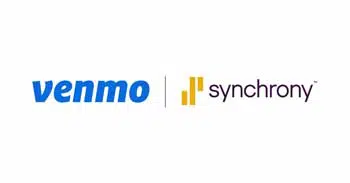PayPal Holdings Inc. has made no secret of its push to generate revenue from its highly popular—but free—Venmo peer-to-peer payment service. Its latest gambit came to light early Thursday with the news that long-time finance partner Synchrony Financial will issue a Venmo credit card for the U.S. market starting the second half of next year.
The announcement is mum about a number of details, including whether the card will be network-branded like the existing PayPal-Mastercard credit card. Deciding the matter is likely one reason the product will take some time to appear. “We have not announced a network partner at this time,” says a PayPal spokesperson.

But network affiliation will greatly expand acceptance for the new card beyond the locations that now take Pay With Venmo, a fee-generating service that lets users tap their Venmo balance at the point of sale. It will also let PayPal tap interchange income earned on each transaction.
Indeed, the new card is “an interchange play for PayPal/Venmo to increase profitability by marketing the product to Venmo’s customers,” notes Rick Oglesby, principal at AZ Payments Group, a Mesa, Ariz.-based consultancy, via email. “Venmo has a strong millennial customer base that is likely to be relatively unsaturated from a credit perspective.”
Those balances could also prove a big source of income, as well, experts say. The partners will likely structure the card to reach as many types of credit card users as possible, especially those who have the strongest tendency to revolve, says Patricia Hewitt, principal at Savannah, Ga.-based PG Research & Advisory Services.
Venmo has clearly proven to be a major hit for PayPal. Users generated $24 billion in volume during the second quarter alone, the latest figure available. But PayPal has been challenged to get revenue from the product, using fee-based tactics such as instant withdrawal and a Pay with Venmo service. Meanwhile, a Mastercard-branded Venmo debit card allows PayPal to collect a share of transaction fees.
Now Synchrony, which PayPal has worked with in various capacities for 15 years, could come to the rescue. PayPal earlier this year revealed Venmo has more than 40 million active users, “so even just a 5% penetration will yield 2 million new cardholders,” says Brian Riley, head of credit advisory services at Mercator Advisory Group, a Marlborough, Mass.-based research and consultancy firm. “This should help PayPal protect Venmo’s position in the P2P market” against major rivals such as the bank-owned Zelle network, he adds.
But the work remaining to be done—including the design of a possible rewards scheme—virtually dictates the card won’t be ready until the latter part of next year, Hewitt adds. “It’ll take a long time” to come to fruition, she says.
It could be worth the wait for both PayPal and Synchrony. “There is good upside for PayPal here,” says Oglesby. “By linking a credit card to Venmo services and enabling easy ways to pay the card balance from Venmo balances, PayPal can not only grow revenue, but also enhance the value of Venmo as a product and increase both the number of consumers carrying a balance in Venmo and the average balance size.”





